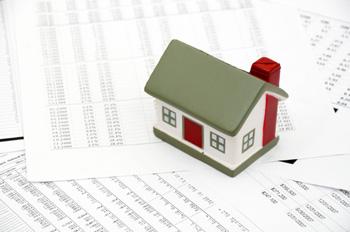4 Facts on Subprime Mortgage to Know
 Introduction:
Introduction:
A subprime mortgage is a high interest mortgage offered to potential homeowners with poor credit ratings. Lender charge these higher interest rates as there is a greater risk associated with lending to individuals that are likely to default on their mortgage.
What are factors that lenders use to determine if an individual should receive a mortgage?
Lenders examine several factors when determining the credit worthiness of an applicant and if a borrower should receive a subprime mortgage rather than a market rate mortgage
An absence of credit record- if there is not enough of a credit history to judge whether the applicant is credit-worthyThe absence of assets or collateral – if the borrower has no assets that the lender could potentially use to recoup their losses in the event of the lender defaulting on the mortgage, then the borrower will have a lower credit rating.Existing debt – if a borrower is already in debt or has a history of bankruptcy, the lender will surely consider that individual a high risk borrower and will offer the borrower a subprime mortgage, if any offer at all.
What is an Adjustable Rate Mortgage (ARM)?
Subprime borrowers often accept adjustable rate mortgages as these mortgages generally have a lower initial payment and a low interest rate. While these offers are initially appealing, the floating interest rate will cause the monthly payments to balloon, eventually causing many homeowners to default on their payments. On the other hand, fixed rate mortgages usually more expansive but provide long term stability and may end up cheaper than the adjustable rate mortgage and its steadily increasing payments. Banks prefer ARMs as it grants them flexibility and the ability to balance their saving obligations with their lending obligations with regards to market conditions during the mortgage term. Some mortgages may have a hybrid of fixed and adjustable rates after certain amounts of time or capital repaid. For instance, the adjustable rate period may end after 24 years but not before substantially increasing the monthly payment. It is the responsibility of the borrower to understand the terms of the mortgage agreement and the options made available to them by the lender.
Can I repay my mortgage early?
Some mortgages offer the ability to repay parts of the capital earlier to reduce the total amount owed as well as the amount of interest to be paid to the bank. The length of the mortgage can also be adjusted through early payment. Banks typically charge penalties for refinancing fixed mortgages as they lose payments that would have otherwise been made at above market interest rates. Banks will offer refinancing plans wherever interest rates are significantly lower than when the borrower initiated the mortgage.
What caused the Subprime Loan Crisis?
The subprime loan crisis arose from the bundling of subprime mortgages with conventional mortgages and selling these bundles as asset backed securities. As borrowers found their adjustable rate mortgages soaring, they were unable to make payments, defaulted, and went into foreclosure. This led to a crisis in lending confidence with lenders no longer willing to extend credit for fear of the risks.
Related Topics
- SunTrust Mortgage
- Alexandria Realtors
- Do You Need a Bad Credit Mortgage Loan
- The Truth About Property Taxes
- Winnipeg Realtors
- Canton Real Estate
- Boston Real Estate
- The Best of Idaho Real Estate
- Seattle Realtors
- A Quick Overview to Mortgage Brokers